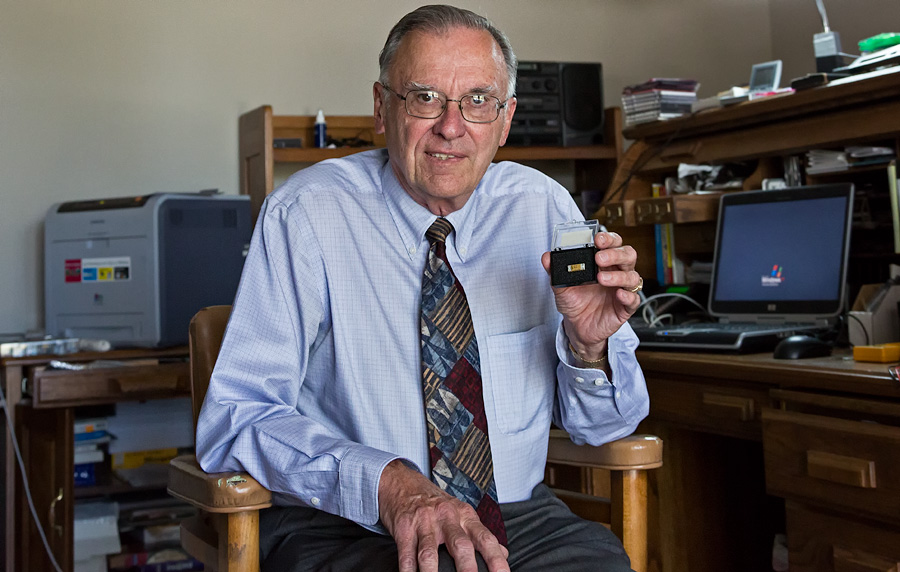Inventor of the microprocessor.
In 1971, Intel Corporation introduced the world’s first microprocessor, the Intel 4004, a technological feat that (understatement alert) changed the world. What the fractional horsepower motor did to the Industrial Revolution, the microprocessor did to the ongoing digital revolution.
The original architecture of the microprocessor was conceived by Marcian “Ted” Hoff, the brilliant engineer and employee number 12 at Intel. His two colleagues, Stanley Mazor and Federico Faggin, helped bring the idea to fruition. The trio was honored by President Obama (link to video) with the 2009 National Medal of Technology in a ceremony held at the White House.
I met Dr. Hoff yesterday at his home in Los Altos Hills in California. A warm, unassuming man, he carries with him a rich fund of stories and personal recollections of the early days of Silicon Valley and the pioneers who made it, men such as Frederick E. Terman, Dave Packard, Robert Noyce, Gordon Moore, Bill Shockley, Sherman Fairchild and others. Dr. Hoff‘s affection for Robert Noyce was especially palpable when he remembered Noyce’s depth in semiconductor electronics and his inspiring presence.

Marcian “Ted” Hoff
5D Mark III, 85L II

With his invention, Intel 4004, the world’s first microprocessor
5D Mark III, 24-105L

At home in Los Altos Hills, California
5D Mark III, 24-105L





[…] out that as luck would have it, ace portraitist Dr. Rajan Parrikar, no mean engineer himself, had just published a splendid photo essay on none other than Dr. Marcian ‘Ted’ […]
There are few better ways of seeing what Dr. Hoff hath wrought than this graph showing how the 2,300 transistor count on his 4004 CPU has grown:
http://en.wikipedia.org/wiki/File:Transistor_Count_and_Moore%27s_Law_-_2008.svg
As I drop in a Core i7 in my computer today, with it’s nearly 1,000,000 transistors, it is Marcian Hoff I will be thinking of, the creator of America’s greatest invention.
The 10 micron spacing on Hoff’s invention is now down to 22 nanometers on the latest Ivy Bridge …. with the Xeon Westmere sporting no fewer than 2.6 million transistors and all available from your local computer store.
The story of Hoff and Faggin’s great work is here:
http://en.wikipedia.org/wiki/Intel_4004
Thanks for a great photo essay.
# 3 has amazing clarity , sharpness and colours despite the bright background. It almost looks like a pasted on image.
was it a fill in flash ?